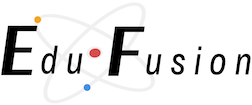Recently there has been great interest in civics, the notion of our civil society, and stability in politics. In my critical thinking classes I always ask my students how they engage in the political process. A large number of students consistently say that they do not get involved because of the lack of civility in the political process and how they find it difficult to understand the “other side.” Some, like John Wood (2022), posit that
“Polarization is not merely a problem of our failure to recognize the same facts. It is a problem of interpretation, identification and tribalization. We see things differently, identify ourselves differently and group ourselves together (and in opposition to each other) according to the ways in which we see the world.” (para. 5)
We need only turn on the television or look on our favorite app to see how completely we are failing in the basics of critical thinking and civility, especially when debating or exploring our favorite candidates. As critical thinkers, we should be alarmed because this goes against the very set of skills that encompass critical thinking itself. But why is it so difficult? Part of the answer might be psychology, but a good argument can be made related to the problems with critical thinking including errors in thinking, barriers to thinking, and a failure of empathy and communication skills.
One of the essential traits of the critical thinker is to be an open-minded skeptic as we explore topics with people who may or may not agree with us. As we think of how this can influence the political discussion, Verducci (2019) argues that the “object is not necessarily to win a debate. Rather, it is to understand what is being said on all sides and, perhaps, to find a nucleus of agreement that will provide a starting point from which we can work together” (p.10). As the quote highlights, it is important as critical thinkers that we are open to the possibilities. When we become so entrenched that we only see what we want to see, then we begin to fall into the traps that politicians would like to see us fall into. We begin to put up barriers to thinking and we also begin to use dirty tricks like fallacies in order to improperly influence not just our audience and how they think, but also how we think.
Critical thinkers should begin to recognize the power of words and how people will often try to deceive us with dirty tricks like fallacies. As we explore the realm of politics, what are some common fallacies though and how do we spot them? A non-exhaustive list might include:
- Bandwagon fallacy The bandwagon fallacy is listed first because it is perhaps one of those fallacies which impact people the most in an election cycle. They see something on social media that agrees with their viewpoint and they immediately jump on the bandwagon and share it regardless of the accuracy of the information.
- Ad Hominem personal attack The ad hominem personal attack is often used by politicians and by their supporters as a way to avoid real discussion of issues and simply try to paint the other side in a bad light. Just attack the person rather than discussing the message.
- Big lie fallacy There is no better example of the big lie fallacy than our last election where there were allegations of the election being rigged. The lies were repeated over and over in different forms in order to influence a group of people into believing something which did not include a scintilla of truth.
- Affective fallacy The affective fallacy involves the idea that a person should follow their feelings or follow their heart rather than seeking out the truth. In politics we see this as the person who tells us “I’m following my heart” rather than looking for the evidence or selecting a candidate based on reason.
- Alternative truth The alternative truth fallacy is based on the notion that the speaker provides a different version of the truth rather than the truth itself. In other words it is offering something that is not true rather than accepting something that is true.
- Argument from ignorance This type of fallacy is grounded in a deceptive argument. It may be used to either prove or disprove something where there is no proof for that conclusion.
- Argumentum Ad Baculum In this type of fallacy there is the threat of force or strength used by the politician in order to influence the audience to do something or not do something. We see this used by politicians also as a way to get what they want. For example, a politician might say, “if I don’t get my way then there will be violence.”
- Hyperbole and Availability bias Politicians frequently use this type of fallacy as a way to improperly influence their audience. They will say things like everybody knows it’s true, or the majority of Americans feel this way without backing up the assertion with facts.
- Red Herring Politicians love to use red herrings during debates when they really don’t want to talk about an issue they will simply pivot away and talk about something else. This often leads to ad hominem personal attacks as well as they begin to shift into different modes and attack the person rather than dealing with an argument.
- Confirmation bias We believe what we want to believe. We only seek out the information which supports what we want to believe. Politicians use this but it is also frequently used by political supporters who only seek out information which would tend to verify what they want to believe, while ignoring any information which does not support that view.
The list above is not exhaustive as there are many more fallacies that are commonly used by people on both sides of the divide. To learn more about fallacies, explore The Master List of Fallacies and Logically Fallacious. Not only must we identify fallacies and dirty tricks, we also must monitor our own minds to make sure we are not setting up barriers to thinking that will influence our thinking in a negative way.
Barriers to thinking are important to understand because these help drive misconceptions and allow people to insulate themselves in a sheltered bubble often far from reality. Boss (2021) in Chapter 1of the book, Critical thinking: Why it’s important includes a nice overview of barriers to thinking and the connection to how people think and react in political “discussions” is readily apparent. The first major category of barriers she explores is resistance. This includes the barriers of anger, denial, cliches, avoidance, ignorance, and conformity to name a few (Boss, 2021, p. 58-59). These barriers describe how people act and react when presented with facts from a person on the other side of the political spectrum. Whether they become angry, choose to avoid the person in the future so that the facts can also be ignored, or they simply choose to be willfully ignorant or deny the facts being presented, the barriers to thinking put up walls that keep the person from knowing what should be known and prevent engagement with others to find solutions. But there are other barriers which are just as problematic, and these are in the category of narrow-mindedness. According to Boss (2021) “narrow-mindedness and rigid beliefs, such as absolutism, egocentrism, and ethnocentrism, can become barriers to critical thinking” (p.63). There is little room for understanding or compromise with these barriers which might best be described as “my way or the highway” barriers. Politicians and partisans use these all of the time to justify their viewpoints or deny the viewpoints of others.
This leads to the next area of concern because communication skills are what help the critical thinker to explore the arguments being put forth from the other side. According to Yosuf and Adeoye (2012) “Critical thinkers raise vital questions and problems, formulate them clearly, gather and assess relevant information, use abstracts ideas, think open-mindedly, and communicate effectively with others” (p. 312). Communication skills are very important because this is how the critical thinker is going to work through and actually communicate with that person from the other side. It is a process that is reached after working through a process that helps a person understand both the strengths and weakness of party or policy and also then an exploration of those facts and arguments. In our current atmosphere, communication is an issue though because people seek out only sources that support their points of view, whether in news outlets or social media follows. According to Calb (2024)
“People tune in to separate and distinct information streams from which they receive contradictory messages about what constitute the nation’s problems, and how best to fix them. They increasingly don’t like each other and seem unable or unwilling to communicate across partisan or ideological lines. Policy disagreement becomes personal animus. More Americans embrace seemingly outlandish conspiracy theories, while it grows difficult for even attentive citizens to distinguish truth from falsehood.” (para 1)
This begs the question of how do we reconcile the two, or can we? How do we move from the tribalism described by Calb into a space where people embrace the principles espoused by Yosuf and Adeoye? Perhaps empathy is the answer. In its simplest form, empathy allows us to step into another’s shoes so that we can understand their point of view. It helps us to view the arguments they make with less of our own bias interfering with understanding. In theory then at least, as we listen to someone on the other side of the political spectrum, this should help us to understand their arguments. What it does not assure us though, is that we can reach a compromise. It may mean that we can agree on common issues more and actually see a person as a person and not as the enemy.
In summary, there is no quick fix for returning civility to the American political process. Politicians and media outlets have become skilled at finding our vulnerabilities in thinking and exploiting them. By using our critical thinking skills and understanding the dirty tricks they are using, we can become better informed and perhaps a bit less tribal in our thinking. From there, we may find that we have a bit more in common than we imagined.
References
Baum, M. (2024). DPI-608: Political Communication Breakdown: Causes, Consequences, and Solutions. Harvard Kennedy School. Harvard University.
Boss, J. (2021). Chapter 1: Critical thinking Why it’s important. In THiNK: Critical thinking and logic skills for everyday life (5th ed., p.58). McGraw-Hill.
Verducci, S. (2019). Critical thinking and open-mindedness in polarized times. Encounters in Theory and History of Education, 20(1), 6-23.
Wood, J.,Jr. (2022, Aug 21). Americans on all sides of politics should embrace civility. The News Journal https://www.proquest.com/newspapers/americans-on-all-sides-politics-should-embrace/docview/2704581369/se-2
Yusuf, F. A., & Adeoye, E. A. (2012). Developing critical thinking and communication skills in students: Implications for practice in education. African research review, 6(1), 311-324.

